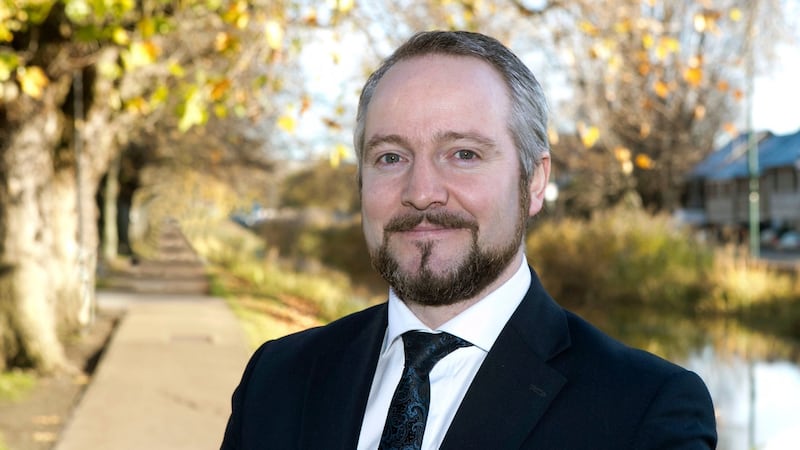Late last year, Ireland found itself straggling behind its European partners in the climate-change fight, well on course to miss its targets on emission reductions.
Aside from the 2020 goals, the independent Climate Change Advisory Council warned that Ireland will struggle to decarbonise by 2050 if matters are not put on a more determined course.
Today, Ireland is facing a clear danger of fines worth hundreds of millions of euro for a lacklustre performance. Meanwhile, the latest Environmental Protection Agency (EPA) data show emissions rose again in 2016.
"To my mind, it should reinforce a sense of urgency," says Jim Gannon, chief executive of the Sustainable Energy Authority of Ireland (SEAI), the organisation whose raison d'être is to guide policy.
Its greatest challenge, perhaps, is to educate and persuade everyone from individual homeowners to large businesses to turn green, and fast. Negative headlines have their uses to drive home the need for action.
But there is a cautionary side to this too, he adds: “I think there is a risk that if we continue to focus on the negatives and beat ourselves with a stick we will only talk ourselves into failure.”
Failure, however, is not an option. Reflecting that, SEAI’s budgets have steadily risen to help it increase energy efficiency and promote the use of renewable sources of energy.
67 per cent of Irish people believe climate change to be a serious issue
In 2004, it had a budget of just under €14 million. That climbed to €127 million in 2011, before crashing to €67.4 million two years later. Since then, it has risen again, now reaching a record €152.6 million this year.
The extra funding is “unprecedented”, says Gannon. “We have anticipated this for quite some time, the need that Ireland will have to significantly improve our performance,” he says.
Daunting
It is daunting, however. EU states, including Ireland, have agreed that greenhouse gas emissions in the EU must fall by 40 per cent by 2030 from those that were emitted in 1990.
By 2040, emissions should be 60 per cent down on 1990 levels. By 2050, they must be 80 per cent below 1990 levels. Nothing less than an energy revolution will be required.
To date, Gannon believes SEAI has lived up to its role of encouraging “sustainable, secure, affordable and clean” and has met the country’s demand for change: “The evidence of that is the appetite out there,” he says.
A recent European Commission survey he quotes found 67 per cent of Irish people believe climate change to be a serious issue and 88 per cent believe addressing it can be good for the economy, not bad.
Through the Department of Communications, Climate Action and Environment between 2011 and 2017, the SEAI has funded €468 million worth of sustainable energy projects. So far, it has €1.2 billion worth of savings.
Chief among those achievements is the upgrading of 217,000 homes – benefitting from various SEAI grants – 233 community projects and financial assistance with the purchase of 2,750 electric vehicles.

Despite concerns around the availability of charging points and the price of EV cars, the numbers of motorists getting involved is rising. One thousand EVs were registered by May this year, compared to 972 for all of last year.
There are grants to help pay for electric cars ranging from €2,000 to €5,000, depending on the price of the vehicle, and of up to €600 for the installation of a home charger.
Meanwhile, SEAI has been active in ocean energy, too. Last year, it secured planning permission for an ocean energy test site in Belmullet, Co Mayo,and has invested in 15 ocean energy prototype projects.
With dairy farmers, SEAI has been encouraging them to install more efficient vacuum and milk-pump technology, while SMEs can access financing contributions for more efficient lighting systems.
Aggressive cuts to consumption
Backed by data compiled from years of running grant schemes, SEAI believes it has the information needed to allow it to confidently model future schemes targeted at bringing about aggressive cuts to consumption.
But correcting a country and an economy dependent upon fossils fuels is not an easy task, Gannon admits, pointing to the problems evident in dealing with transport and heating – two of Ireland’s biggest sins.
Ireland has the third highest CO2 emissions per head for home energy use in the European Union, with 700,000 homes “locked in” to fossil fuels, typically oil.
“That is a point of significant challenge for us because they are distributed across the country. Some are rural and some are urban and there may not be any single solution,” Gannon says.
Since the late 2000s, SEAI has given grants to home-owners to fit insulation onto often poorly-built homes, install solar panels for water heating, along with heat pumps and heating controls.
The “Better Energy Warmer Homes” scheme funds upgrades for those vulnerable to “energy poverty”, while a “Warmth and Wellbeing” programme helps those with chronic respiratory illness.
A major pilot under way is the “Deep Retrofit Pilot Programme”, which is far more extensive than anything SEAI has operated up to now, to bring Ireland’s older, less efficient housing stock up to standard.
There is a large mountain to climb but there has been a reduction of 25 per cent in CO2 between 2006 and 2014
It could cost €35 billion to retrofit one million homes to 2050 carbon standards. The scheme is not straightforward, however. Individual homeowners cannot apply, for example.
For the pilot, the SEAI sought groups of five or more homes, with funding streamed through a community group, local authority or other representative organisations “with the capacity and ability to deliver”.
‘Mountain to climb’
“You have to look at the starting point. There is a large mountain to climb but there has been a reduction of 25 per cent in CO2 between 2006 and 2014. We are moving in the right direction,” he says.
The scheme helps SEAI to test out even bigger plans : “One thing we have to be honest about with the Deep Retrofit project is that we may not be comfortable with all of the answers that it gives us.”
In some cases, it just may not be economical to refit a house: "The jump required to bring someone from where it is to A3 level may be too big," he tells The Irish Times.
But the general signs are positive. On the commercial side, an altruistic approach to climate change is not necessarily the main driver of change. Companies are primarily driven by the desire to cut costs.
"If you look internationally, the signals are quite positive," Gannon goes on, adding that businesses in the United States stayed committed even after Donald Trump's controversial withdrawal from the Paris climate agreement.
In Ireland, SEAI cites Dublin Airport Authority for saving 78 per cent of its costs lighting car parks, or Vodafone Ireland's €500,000 saving when it acted to cut bills in its data centres, retail stores and offices.

















